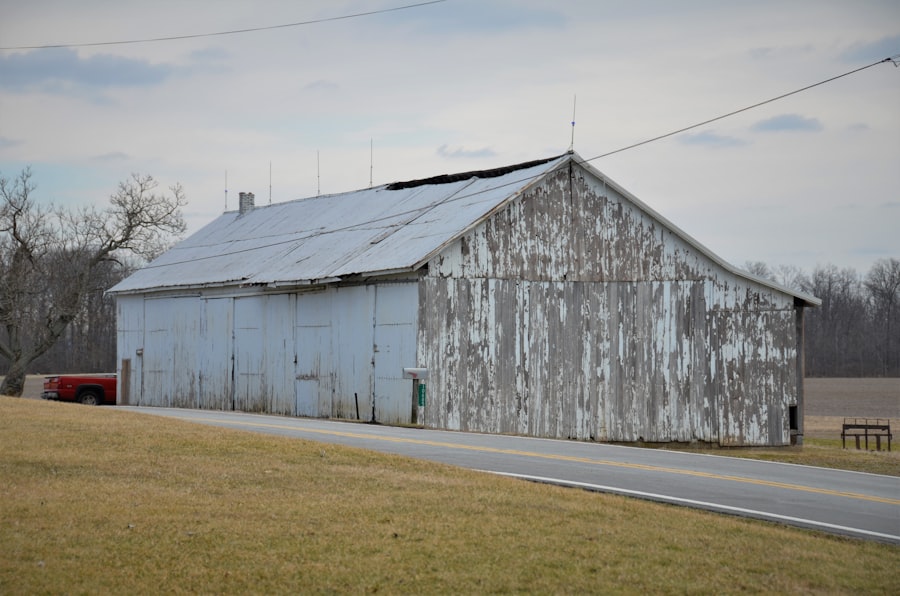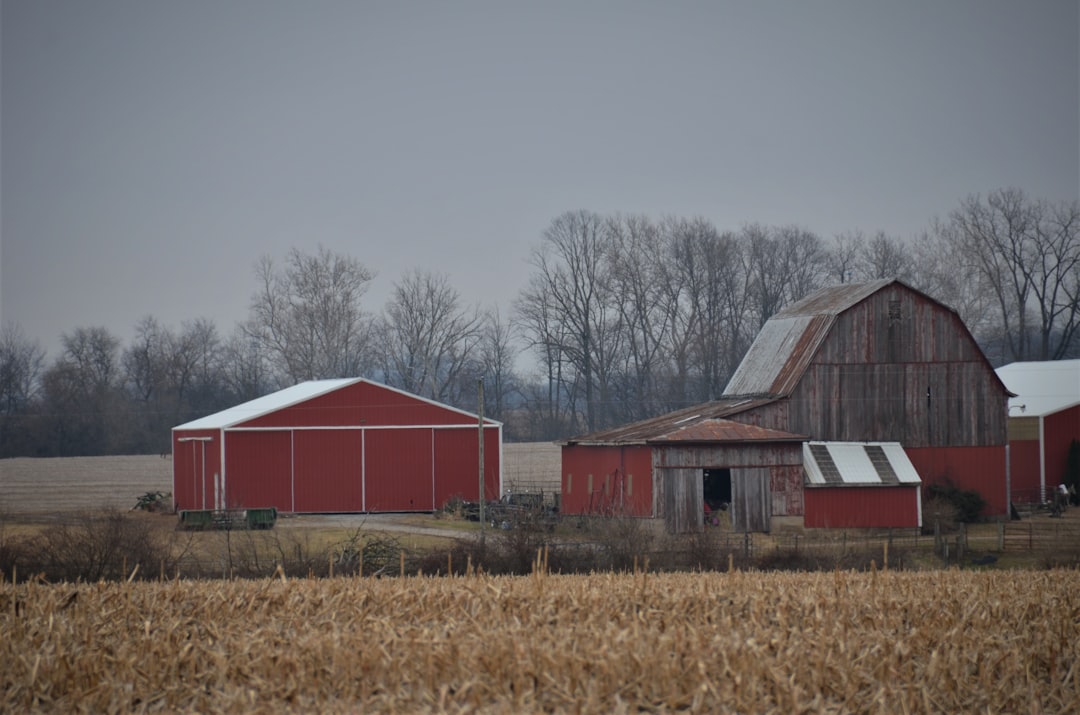The decline of rural communities in the United States has become a pressing issue over the past few decades. Once vibrant hubs of agriculture, craftsmanship, and local culture, many rural areas now face significant challenges that threaten their very existence. Population decline is one of the most visible indicators of this trend.
Young people, seeking better opportunities, often migrate to urban centers, leaving behind an aging population that struggles to maintain the social and economic fabric of their communities. This demographic shift not only diminishes the workforce but also erodes the cultural identity that has defined these areas for generations. Moreover, the decline of rural communities is often accompanied by a loss of essential services and amenities.
As businesses close and populations dwindle, local schools, grocery stores, and healthcare facilities may shut down, creating a cycle of decline that is difficult to reverse. The once-bustling main streets of these towns are now lined with empty storefronts, and the sense of community that once thrived is replaced by isolation and despair. The challenges faced by rural communities are multifaceted, requiring a comprehensive understanding of the underlying issues to foster effective solutions.
Key Takeaways
- Rural communities are experiencing a decline in population and economic opportunities, leading to a variety of challenges.
- Economic challenges in rural America include job scarcity, low wages, and limited access to capital and resources for businesses.
- Lack of access to healthcare in rural areas contributes to disparities in health outcomes and limited preventative care options.
- Education disparities in rural areas result from limited resources, teacher shortages, and lack of access to advanced coursework and technology.
- Substance abuse and mental health issues are prevalent in rural communities due to limited access to treatment and support services.
- Infrastructure and technology gaps in rural areas hinder economic development and access to essential services like high-speed internet and transportation.
- Environmental concerns in rural communities include pollution, natural resource depletion, and the impact of climate change on agriculture and livelihoods.
- Agricultural struggles in rural America stem from market volatility, trade disputes, and the consolidation of farms, leading to financial instability.
- Political disenfranchisement in rural areas results from limited representation and influence in decision-making processes at local and national levels.
- Solutions for revitalizing rural America include investment in infrastructure, healthcare, education, and economic development, as well as support for small businesses and agriculture.
- Supporting rural communities is crucial for maintaining a diverse and thriving national economy, preserving cultural heritage, and ensuring equitable access to resources and opportunities for all Americans.
Economic Challenges in Rural America
Economic challenges in rural America are deeply intertwined with the decline of these communities. Many rural areas have historically relied on industries such as agriculture, mining, and manufacturing, which have faced significant transformations due to globalization and technological advancements. As larger corporations dominate these sectors, small family-owned farms and local businesses struggle to compete, leading to job losses and economic stagnation.
The lack of diverse economic opportunities further exacerbates the situation, leaving many residents with few options for stable employment. Additionally, rural areas often experience higher rates of poverty compared to urban counterparts. Limited access to resources such as education and job training programs contributes to this disparity.
Many residents find themselves trapped in a cycle of low-wage jobs with little chance for advancement. The economic challenges faced by rural communities are not merely a matter of individual hardship; they reflect systemic issues that require targeted interventions to create sustainable economic growth and development.
Lack of Access to Healthcare

Access to healthcare is a critical issue in rural America, where residents often face significant barriers to receiving necessary medical services.
This scarcity can lead to delayed diagnoses and treatment for serious health conditions, ultimately resulting in poorer health outcomes for residents.
The distance to the nearest hospital or clinic can be daunting, particularly for those without reliable transportation. Furthermore, the shortage of healthcare professionals in rural areas exacerbates the problem. Many doctors and specialists prefer to practice in urban settings where they can benefit from a larger patient base and more resources.
As a result, rural residents may have to travel long distances for specialized care or forego treatment altogether. This lack of access not only affects physical health but also contributes to mental health challenges, as individuals may feel isolated and unsupported in their healthcare journeys.
Education Disparities in Rural Areas
| Education Disparities in Rural Areas | Metrics |
|---|---|
| 1 | Lack of access to quality education |
| 2 | Higher dropout rates |
| 3 | Limited resources for extracurricular activities |
| 4 | Shortage of qualified teachers |
| 5 | Less access to technology and educational tools |
Education disparities in rural areas present another significant challenge that contributes to the decline of these communities. Schools in rural regions often face funding shortages, leading to inadequate resources, outdated materials, and limited extracurricular opportunities.
As a result, students in rural areas may not receive the same quality of education as those in more affluent urban districts. The impact of these educational disparities extends beyond the classroom. Students who do not receive a strong education may struggle to pursue higher education or secure well-paying jobs after graduation.
This perpetuates a cycle of poverty and limits the potential for economic growth within rural communities. Addressing these educational inequities is essential for empowering future generations and revitalizing the social and economic landscape of rural America.
Substance Abuse and Mental Health Issues
Substance abuse and mental health issues have emerged as critical concerns in many rural communities. The isolation and economic hardships faced by residents can contribute to feelings of despair and hopelessness, leading some individuals to turn to drugs or alcohol as a coping mechanism. The opioid crisis has particularly impacted rural areas, where access to addiction treatment services is often limited.
This epidemic not only affects individuals but also places a strain on families and communities as a whole. Mental health services are also scarce in rural regions, making it difficult for individuals to seek help when they need it most. Stigma surrounding mental health issues can further deter residents from reaching out for support.
As a result, many individuals suffer in silence, leading to increased rates of depression, anxiety, and suicide. Addressing substance abuse and mental health challenges requires a multifaceted approach that includes increasing access to treatment services, reducing stigma, and fostering community support networks.
Infrastructure and Technology Gaps

Infrastructure and technology gaps pose significant barriers to the growth and sustainability of rural communities. Many rural areas lack reliable transportation systems, making it difficult for residents to access jobs, education, and healthcare services. Poor road conditions can hinder economic development by discouraging businesses from setting up shop in these regions.
Additionally, limited public transportation options can isolate individuals who do not own vehicles or cannot drive. In terms of technology, many rural communities struggle with inadequate internet access, which has become increasingly essential in today’s digital age. Without reliable broadband service, residents may find it challenging to participate in remote work opportunities or access online educational resources.
This digital divide further exacerbates existing inequalities and limits the potential for innovation and growth within these communities. Bridging these infrastructure and technology gaps is crucial for fostering economic development and improving the quality of life for rural residents.
Environmental Concerns
Environmental concerns are particularly relevant in discussions about rural America, where agriculture plays a central role in local economies. Issues such as soil degradation, water pollution, and climate change pose significant threats to both the environment and agricultural productivity. Farmers often face challenges related to extreme weather events, which can disrupt planting and harvesting cycles while also impacting crop yields.
These environmental stresses can lead to financial instability for farmers and contribute to the overall decline of rural economies. Moreover, environmental degradation can have far-reaching consequences for public health in rural areas. Contaminated water sources or exposure to harmful chemicals can lead to serious health issues for residents.
Addressing these environmental concerns requires a collaborative effort between local communities, government agencies, and environmental organizations to promote sustainable practices that protect both the land and the people who depend on it.
Agricultural Struggles
Agricultural struggles are at the heart of many challenges faced by rural communities in America today. While agriculture has historically been a cornerstone of rural economies, modern farming practices have transformed the landscape significantly. The rise of industrial agriculture has led to increased consolidation within the industry, leaving small family farms struggling to compete against larger agribusinesses that benefit from economies of scale.
Additionally, fluctuating commodity prices can create uncertainty for farmers who rely on consistent income from their crops or livestock. Many farmers find themselves burdened with debt as they invest in equipment or technology needed to remain competitive. This financial strain can lead to mental health issues and even tragic outcomes such as farm-related suicides.
Supporting sustainable agricultural practices and providing resources for small farmers is essential for revitalizing rural economies and preserving the cultural heritage tied to farming.
Political Disenfranchisement
Political disenfranchisement is another critical issue affecting rural communities across America. Many residents feel disconnected from political processes that impact their lives directly. This sense of alienation can stem from a lack of representation at local, state, and national levels or from policies that prioritize urban interests over those of rural populations.
As a result, important issues such as healthcare access, education funding, and infrastructure development may be overlooked or inadequately addressed. Furthermore, political polarization has intensified divisions between urban and rural voters, making it challenging for policymakers to find common ground on critical issues affecting both demographics. This disenfranchisement can lead to apathy among rural residents who feel their voices are not heard or valued in the political arena.
Encouraging civic engagement and fostering dialogue between urban and rural communities is essential for creating inclusive policies that address the unique needs of all citizens.
Solutions for Revitalizing Rural America
Revitalizing rural America requires a multifaceted approach that addresses the various challenges faced by these communities. One potential solution lies in investing in education and workforce development programs tailored specifically for rural populations. By providing access to training opportunities that align with local job markets, residents can gain valuable skills that enhance their employability and contribute to economic growth.
Additionally, promoting entrepreneurship within rural areas can stimulate local economies by encouraging residents to start their own businesses or support existing ones. Access to capital through grants or low-interest loans can help aspiring entrepreneurs turn their ideas into reality while creating jobs within their communities. Furthermore, enhancing infrastructure—such as improving transportation networks and expanding broadband access—can facilitate economic development by attracting new businesses and enabling residents to connect with broader markets.
The Importance of Supporting Rural Communities
Supporting rural communities is vital not only for their survival but also for the overall health of the nation as a whole. Rural areas contribute significantly to the economy through agriculture, natural resources, and tourism while also serving as cultural bastions that preserve unique traditions and ways of life. By investing in these communities—through policy changes, funding initiatives, and grassroots efforts—society can foster resilience against the challenges they face.
Moreover, strengthening rural communities benefits urban areas as well; vibrant rural economies can create demand for goods and services produced in cities while also providing essential resources such as food and raw materials. Ultimately, recognizing the interconnectedness between urban and rural populations is crucial for building a more equitable society where all individuals have access to opportunities for success regardless of their geographic location. Supporting rural America is not just an act of charity; it is an investment in the future prosperity of the entire nation.
The forgotten crisis of rural America is a pressing issue that often goes unnoticed amidst the hustle and bustle of urban life. Many rural communities face challenges such as declining populations, limited access to healthcare, and economic hardships. An insightful article that delves into these issues can be found on MyGeoQuest. It explores the various dimensions of rural America’s struggles and offers potential solutions to revitalize these communities. For a deeper understanding, you can read more about it in this related article.
WATCH NOW! Why America’s Heartland Is Disappearing Fast
FAQs
What is the forgotten crisis of rural America?
The forgotten crisis of rural America refers to the economic and social challenges faced by rural communities, including poverty, lack of access to healthcare and education, and declining infrastructure.
What are some of the key issues facing rural America?
Some of the key issues facing rural America include population decline, limited job opportunities, inadequate healthcare services, and aging infrastructure.
How does the forgotten crisis of rural America impact its residents?
The forgotten crisis of rural America has a significant impact on its residents, leading to higher poverty rates, limited access to essential services, and a decline in overall quality of life.
What are some potential solutions to address the forgotten crisis of rural America?
Potential solutions to address the forgotten crisis of rural America include investing in rural infrastructure, expanding access to healthcare and education, and creating economic development opportunities to attract and retain residents.
Why is it important to address the forgotten crisis of rural America?
It is important to address the forgotten crisis of rural America because rural communities play a vital role in the overall economy and social fabric of the United States. Neglecting rural America can have far-reaching consequences for the nation as a whole.
